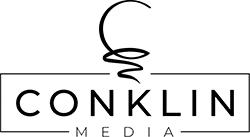Let’s face it: marketing can be expensive. And those marketing expenses can take a particular toll when they don’t seem to be effective and you aren’t reaching that bottom line. There’s nothing more frustrating than pouring money into something and receiving little results. In the case of marketing, it’s probably that you aren’t employing the best marketing growth strategies for your business.
“But they’ve worked in the past!” you might say, up in arms, ready to defend your long-cherished marketing plan.
I won’t argue with you there. But just because they’ve worked in years past, that doesn’t guarantee their success today. Our world is constantly changing. There are new forms of technology, media platforms, and updating systems almost every day, so it’s important to be flexible and keep your marketing plan fresh.
The Top Marketing Growth Strategies You Should Be Implementing Right Now
Let’s go over some of the most important things to know about developing effective marketing growth strategies, shall we?
How Much Should You Be Spending on Marketing?
Before we get started on what types of strategies to employ, let’s first take a look at something of equal importance: how much should you spend on your marketing plan? According to Stephanie Morrow, a multi-disciplinary professor who focuses on communications and advertising, the average company can typically spend between 1% to 30% of their profits on marketing and up to 50% if the company is just starting out and needs to establish their brand.
Establish a Budget
There are a variety of ways to determine how much you should put into that marketing budget. Some companies, particularly small businesses, set a flat rate for their marketing budget each year. Larger companies, on the other hand, tend to allocate their marketing spendings based on a set percentage of their profits. Other methods of setting a marketing budget include basing your spending off that of your competitors or by basing it off what you want to accomplish with your marketing plan.
Know What Money Goes Where
I also recommend that you know exactly what amount of money goes to each element of your marketing plan. This will help you create the most efficient and cost-effective plan for your business.
Bringing Marketing into the Digital Age
Those of you who checked out Morrow’s article on marketing and spending linked above will probably note that, while providing helpful and insightful information, she seems to underscore the importance of digital marketing. That’s because in just a few short years the nature and importance of digital marketing have rapidly evolved and advanced.
Why You NEED a Digital Presence
While traditional, non-digital strategies can still be effective in the form of print, radio, or television, I must emphasize that it is necessary to have a digital presence to back it up. In today’s age, almost everyone will check out and make their decision about a business from its online presence without ever setting foot near it. So, offline marketing is still effective, but having that digital base is an absolute must.
Using Your Online Presence Effectively
Once you’ve established your digital presence, take full advantage of it. Track your business analytics, engage on multiple forms of social media, and create content for targeted audiences and make sure it gets to them. Pay-per-click (PPC) advertising can be another effective way to generate web traffic, but it can also wind up being a bit pricey, so ensure that your advertising platforms are selective and geared toward reaching those customers that will improve your ROI.
Outdated and Ineffective Strategies
In the dawning age of Google and Facebook, many companies went about posting material without much inhibition or thought, eager to generate as many search results as possible. Now, so many businesses out there are doing it that it all starts to blur together into one big, nebulous, unimportant mass. We’ve all fallen victim to content overload, mindlessly scrolling through our phones, not even registering what we’re looking at until, hopefully, something special catches our eye.
Overcoming Content Overload
Content overload is quite the challenge to overcome. What you first need to do is make sure that everything you publish is high quality and grabs the attention of your readers. Don’t take advantage of your audience, or pretty soon you’ll lose it. More on content marketing below.
Avoid Email Spamming
Another outdated strategy that many commonly fall to is email spamming. Most people on average receive dozens of emails a day, making email become part of that same media overload. If your business is sending out emails several times a week with much of the same material, you are part of the problem and what you send out will most likely be moved immediately to the trash, unread.
I recommend counteracting this by sending out emails only sparingly, perhaps every other week or even monthly, with important information in each to establish respect for your brand. Intriguing subject lines are also a must. If utilized correctly, emails can be a great marketing growth strategy that reaches many people at little cost, so make sure you’re doing it right.
Content Marketing
I touched on the importance of good content marketing a bit above, mainly on how it’s abused and can blur into content overload. Implemented correctly, however, content marketing can be an invaluable marketing growth strategy that will not only lend your business credibility but also boost that bottom line.
Sharing Quality Content
Content marketing is fairly self-explanatory when it comes to its basics: it focuses on developing content as a form of marketing. This content is not just shared as advertising, but it is used as a way of establishing your brand and lending it credence. Content that is both engaging and informative will catch the eye of your potential customer and hold it, as that lead finds the information useful and doesn’t grow bored along the way.
Implementing SEO and Reaching Your Target Audience
Generating content also allows you to take advantage of SEO strategies. Determine and incorporate important keywords into your content and titles to up your search results and therefore direct more traffic to your website. Also, be sure to share specific content on targeted platforms with your ideal audience in mind. With effective content marketing, you will not only generate higher web traffic but also meaningful traffic that will translate into higher ROI.
Developing a Promotion Plan
Finally, put it all together to develop a promotion plan and stick to it. Determine with your marketing team what areas need the most attention and what funds to allocate to each.
Once that’s done, create a timeline: make a schedule for when to publish content, send emails, and other forms of outreach. I’ve also found scheduling out different promotions and offers to be effective. Once you’ve got the ball rolling, be patient.
After a few weeks, continue to review your business analytics, keep up to date with the most recent changes in practice, and be flexible. By pushing content marketing and sticking to an organized plan, you’ll see that the bottom line will continue to rise.
Want a little help developing that plan and implementing the best marketing growth strategies? Feel free to reach out to our team and schedule a free consultation, so we can get to talking about the best plan to grow your business and boost your bottom line.









